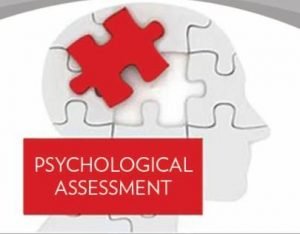Category: Health
 Heather Melena, APRN, PMHNP-BC,
Heather Melena, APRN, PMHNP-BC,
Psychiatric Nurse Practitioner, Lindner Center of HOPE
Living with a chronic illness can be difficult to manage not only physically but also emotionally and mentally as well. The challenges that can come with chronic illness include learning to cope with the symptoms of that diagnosis, figuring out ways to alleviate your symptoms, doctor’s appointments and strain to financial responsibilities and interpersonal relationships. On top of trying to figure out new ways to handle everything that comes with chronic illness, the emotional and mental strain can feel overwhelming and paralyzing. Psychological distress has been shown to increase with chronic disease and its accompanying treatment protocols as well as the many other areas affected in one’s life. It has also been well documented that continued stress and/or distress can lead to poor health outcomes and mental illness (Sheth et al, 2023). Thus, finding ways to find acceptance, cope with the feelings of powerlessness, and learning to live within the limitations caused by one’s chronic illness is imperative to finding relief from the mental and emotional turmoil brought on by physiological changes of illness.
Seeking help from a mental health provider (with or without the use of medications), engaging in individual and group therapy, attending support groups are all ways to tackle the mental and emotional aspects of chronic illness. Studies have shown that engaging in acceptance and commitment therapy as well as learning mindfulness techniques can reduce pain intensity, depression, and anxiety with increased self-management and physical wellbeing for those living with chronic health conditions (Wallace-Boyd et al, 2023). Learning strategies such as active coping skills, planning, positive reframing, and emotional support will all be of value to learning to live with the changes experienced by persistent illness. In practice, discussion is had about learning how to live within these new limitations, being patient and kind to oneself, setting realistic expectations, and acknowledging that the way you feel physically may change from day to day- which can be extremely beneficial for someone experiencing chronic illness. Powerlessness is a tough emotional and mental barrier when struggling day to day, where much uncertainty feels uncomfortable. By practicing acceptance and self-love, we can learn to live in the present and move away from dwelling on what our bodies were once capable of or fearing what the future may hold.
The American Psychological Association (2023) defines self-efficacy as an individual’s belief in his or her capacity to engage in behaviors to achieve personal goals. This is reflected in the confidence one has to exert control over their own motivation, behavior, and social environment. Studies have shown that greater self-efficacy can increase one’s control (or belief of) over health outcomes (Sheth et al, 2023). By learning more positive coping mechanisms and increasing self-efficacy, one can gain confidence in their ability to self-manage their illness and improve their quality of life.
While it may be a difficult task, especially for those that struggle with chronic health problems, engaging in physical activity three to five days a week can be extremely beneficial. There has been endless research on the benefits of physical activity including higher quality of life, lower mortality, reduction of pain, and improved mental health. It has been shown that physical activity can positively impact the overall relationship between inflammation and mental health symptoms, thus reducing inflammation will likely improve depression and anxiety symptoms (Sheth et al, 2023). Physical activity can also improve energy, mental clarity, cognitive ability, and reduce stress and anxiety. It has been shown to improve mood, sleep, and circulation (Sheth et al, 2023).. With that being said, be patient with yourself and listen to your body- if physical activity isn’t what your body needs- rest or try low-intensity activities such as yoga or swimming.
Self-care is something we hear about all the time now- but what does that look like in practice? Self-care is the action or behaviors we incorporate into our daily lives that help not only our physical health but overall mental wellness. Incorporating self-care into our daily lives will not only improve our mood, reduce the toll stress can have on our bodies (ie inflammation, fatigue, sadness), but improve our outlook on the constantly changing physical symptoms of chronic illness. Self-care should be personalized to your needs. In practice we often discuss what someone’s “life worth living” looks like and how to achieve this. Incorporating daily self-care is a step towards learning to live within the new limitation set by illness and reframing our thought processes to think more positively which will enable us to continue moving forward despite our body’s shortcomings. Self-care includes:
- Seeking out professional help: Whether a therapist, mental health provider, nutritionist, personal trainer- all of which can help you navigate treating the many facets of chronic illness, including depression, anxiety, and stress.
- Finding support: Joining a group of people or talking with others who suffer with similar conditions can be cathartic, oftentimes lowering distress levels, and offering ways to coping with the diagnosis.
- Stress Reduction: Identifying sources of stress, finding ways to cut stress out of your life, and ways to better manage stress.
- Physical activity
- Eating well: looking for ways to add foods to your diet that will be beneficial in reducing inflammation, improving immune function, and overall wellbeing. Learning moderation in the foods we eat rather than trying “crash” diets. When we eat foods aimed at healing our bodies, we find that our mood and mental health can improve.
- Sleep: Adequate and restorative sleep is so important for everyone. Our bodies are in a reparative phase while sleeping- which is needed to heal! Try incorporating good sleep hygiene practices including going to bed around the same time each night, avoiding screens prior to sleep, meditation before bed.
- Hobbies: Find things that make you feel fulfilled, and make you feel joy/bring joy to your life- whether they are the same hobbies or activities prior to your diagnosis- it is important to do things that make you feel good!
(Mended Hearts, 2023)
References
American Psychological Association (2023). Teaching tip sheet: Self-efficacy. https://www.apa.org/pi/aids/resources/education/self-efficacy
Ciotti, S. (2023). “I Get It, I’m Sick Too”: An Autoethnographic Study of One Researcher/Practitioner/Patient With Chronic Illness. Qualitative Health Research, 33(14), 1305–1321. https://doi-org.northernkentuckyuniversity.idm.oclc.org/10.1177/10497323231201027
MedlinePlus (2022). Living with a chronic illness- dealing with feelings. National Library of Medicine. https://medlineplus.gov/copingwithchronicillness.html
MendedHearts(2023). Chronic illness and mental health blog. https://mendedhearts.org/chronic-illness-and-mental-health-9-tips-for-self-care/
Sheth, M. S., Castle, D. J., Wang, W., Lee, A., Jenkins, Z. M., & Hawke, L. D. (2023). Changes to coping and its relationship to improved wellbeing in the optimal health program for chronic disease. SSM Mental Health, 3. https://doi-org.northernkentuckyuniversity.idm.oclc.org/10.1016/j.ssmmh.2023.100190
Wallace-Boyd, K., Boggiss, A. L., Ellett, S., Booth, R., Slykerman, R., & Serlachius, A. S. (2023). ACT2COPE: A pilot randomised trial of a brief online acceptance and commitment therapy intervention for people living with chronic health conditions during the COVID-19 pandemic. Cogent Psychology, 10(1). https://doi-org.northernkentuckyuniversity.idm.oclc.org/10.1080/23311908.2023.2208916















